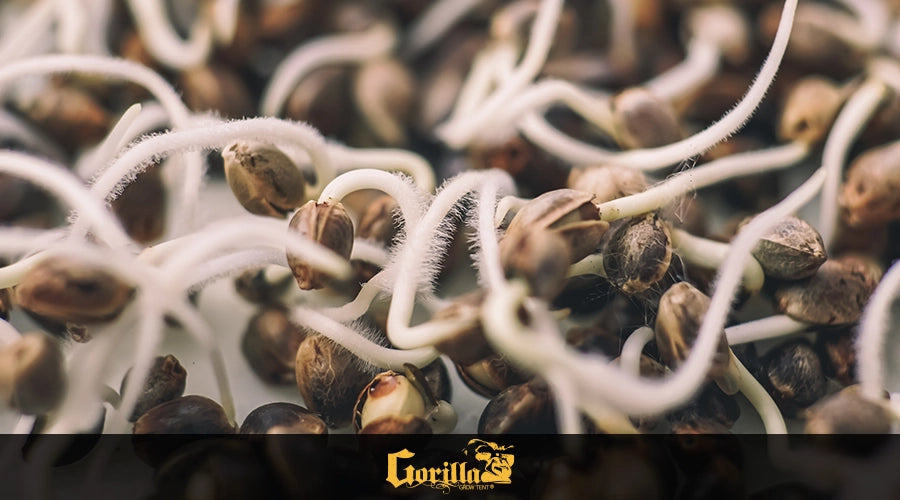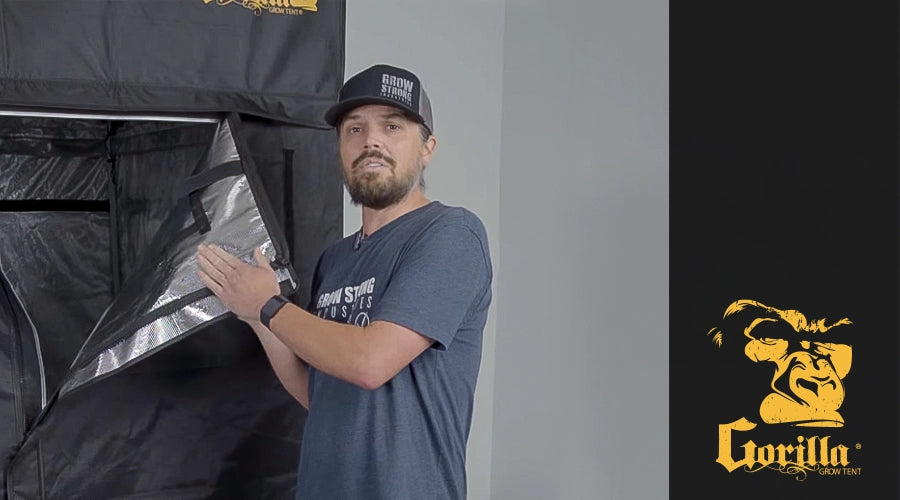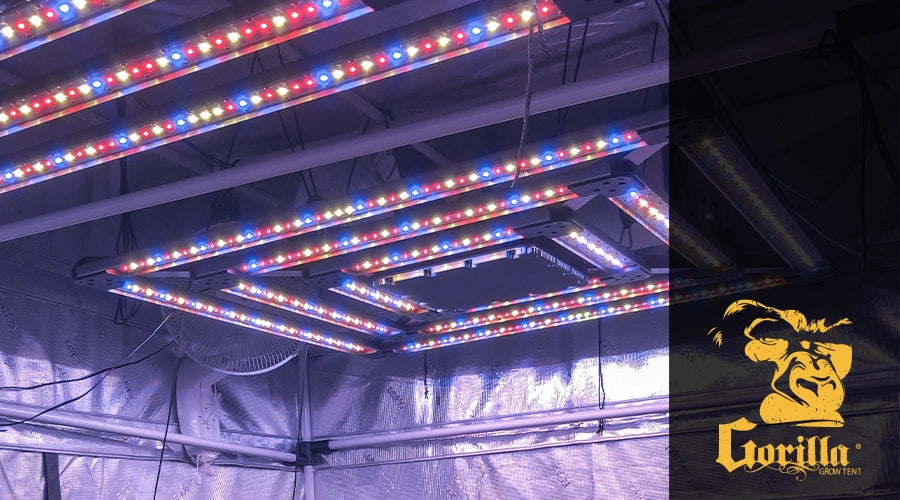
How to Germinate Seeds Successfully
From Seed to Sprout: How to Germinate Seeds Successfully
There are several ways to germinate seeds, and each method has its advantages and disadvantages.Germinating seeds is the process of initiating growth in a dormant seed, allowing it to sprout and develop into a healthy plant. In this essay, we will discuss some of the most popular methods of seed germination and their benefits.

The Best Methods for Germinating Seeds
Germinating Seeds in Soil
Germinating seeds in soil are the most traditional method of seed germination. It involves planting the seeds in nutrient-rich soil, watering them, and exposing them to light and warmth. Here are the steps to germinate seeds in soil:
Step 1: Choose the Right Soil
Choose nutrient-rich soil that is loose and well-draining. Avoid compact soils or soils with high clay content, as they can retain too much moisture and lead to the rotting of the seeds.
Step 2: Prepare the Soil
Fill a pot or container with soil, leaving about an inch of space from the top.
Step 3: Plant the Seeds
Place the seeds on top of the soil, and cover them with a thin layer of soil.
Step 4: Water the Soil
Gently water the soil until it is moist but not waterlogged.
Step 5: Provide Light and Warmth
Place the pot or container in a warm, sunny spot or under grow lights. Keep the soil moist by watering it regularly.
Germinating Seeds in Water
Germinating seeds in water is a simple and effective method that works well for large seeds such as beans and peas. Here are the steps to germinate seeds in water:
Step 1: Soak the Seeds
Place the seeds in a container filled with water, and let them soak for 24 to 48 hours. This will help to soften the seed coat and speed up the germination process.
Step 2: Change the Water
After soaking, change the water and rinse the seeds to remove any debris.
Step 3: Provide Warmth and Light
Place the seeds in a warm, sunny spot or under grow lights. Change the water every day to prevent mold and bacteria growth.
Germinating Seeds in a Paper Towel
Germinating seeds in a paper towel is a popular method that allows you to monitor the germination process closely. Here are the steps to germinate seeds in a paper towel:
Step 1: Prepare the Paper Towel
Moisten a paper towel, and place it on a plate or in a plastic bag.
Step 2: Place the Seeds
Place the seeds on the paper towel, leaving enough space between them.
Step 3: Cover the Seeds
Cover the seeds with another moistened paper towel, or fold the paper towel over the seeds.
Step 4: Provide Warmth and Light
Place the plate or plastic bag in a warm, sunny spot or under grow lights. Keep the paper towel moist by misting it with water.
Germinating Seeds in a Seedling Tray
Germinating seeds in a seedling tray is a method that allows you to control the growing conditions more closely, ensuring the seeds have the best chance of germination. Here are the steps to germinate seeds in a seedling tray:
Step 1: Prepare the Seedling Tray
Fill the seedling tray with nutrient-rich soil, leaving about an inch of space from the top.
Step 2: Plant the Seeds
Place the seeds in the soil, leaving enough space between them.
Step 3: Provide Warmth and Light
Place the seedling tray in a warm, sunny spot or under grow lights. Keep the soil moist by watering it regularly.
Step 4: Transplant the Seedlings
Once the seedlings have developed two or three true leaves than their seed leaves, they are ready to be transplanted into larger containers or into the ground.
Benefits of Germinating Seeds
Germinating seeds is an important step in growing healthy plants. Here are some of the benefits of germinating seeds:
Faster Growth: Germinating seeds speeds up the growth process, allowing plants to develop more quickly.
Increased Yield: By germinating seeds, you can ensure that all your plants will grow and produce healthy yields.
Cost-effective: Germinating seeds is a cost-effective way to grow plants, as it allows you to start with a small number of seeds and grow them into many healthy plants.
Control: By germinating seeds, you can control the growing conditions more closely, ensuring your plants have the best chance of success.
Variety: Germinating seeds allows you to grow a wide variety of plants, including those that may not be available in your local nursery.
Germinating Seeds: Tips and Tricks for a Bountiful Harvest
Use High-Quality Seeds:
Start with high-quality seeds to ensure a high germination rate.
Read the Instructions:
Follow the instructions on the seed packet or consult a reputable gardening resource to ensure you are providing the ideal growing conditions for your seeds.
Provide Adequate Light:
Light is essential for seed germination, so ensure that your seeds receive adequate light by placing them in a warm, sunny spot or under grow lights.
Provide Adequate Water:
Too much water can lead to the rotting of the seeds, while too little water can lead to seedling failure. Ensure the soil or paper towel is moist but not waterlogged, and water regularly.
Maintain Optimal Temperature:
Most seeds germinate best at temperatures between 65°F to 75°F (18°C to 24°C). Ensure that the growing environment is at the optimal temperature range for your seeds.
Harden off Seedlings:
Before transplanting seedlings into the ground, harden them off by gradually exposing them to outdoor conditions over a period of 7 to 10 days.
Keep Records:
Keep track of the germination rates and other growing conditions, such as watering and temperature, to help you refine your techniques for future seed germination.
Germinating seeds is an essential step in growing healthy plants. There are several methods to germinate seeds, including germinating in soil, water, paper towels, and seedling trays. Each method has its advantages and disadvantages, and choosing the right method depends on the type of seeds you are germinating and your growing conditions. Regardless of the method you choose, germinating seeds is a cost-effective and rewarding way to grow healthy plants and enjoy a bountiful harvest.
For avid gardeners and plant enthusiasts, seed germination is a crucial step in cultivating thriving plants. Grow tents offer a controlled environment that promotes optimal conditions for seed germination. In this article, we will explore successful techniques for achieving high seed germination rates in grow tents, allowing you to kickstart your gardening endeavors with confidence.
Seeds of Success: Unleashing the Power of Germination in Grow Tents
Choosing the Right Grow Tent:
Selecting an appropriate grow tent is the foundation for successful seed germination. Factors such as size, ventilation, and durability play a vital role. We delve into the key considerations when choosing a grow tent and offer insights into popular options available in the market.
Setting Up the Ideal Environment:
Creating the perfect environment within your grow tent is essential for successful seed germination. We discuss the importance of controlling temperature, humidity, and lighting conditions. From temperature-controlled heating mats to humidifiers and adjustable LED lights, we explore the tools and techniques to optimize the germination environment.
Selecting Quality Seeds:
High-quality seeds are the building blocks of successful germination. This section guides you on selecting viable seeds and understanding the importance of factors such as seed freshness, genetic stability, and seed source reputation. We also discuss different seed-starting methods, including direct sowing and pre-germination techniques.
Preparing the Growing Medium:
Choosing the right growing medium is vital for seed germination. We explore various options, such as soil mixes, coco coir, and hydroponic setups, outlining their advantages and considerations. Additionally, we provide tips on preparing the growing medium, including sterilization techniques and proper hydration.
Germination Techniques:
This section focuses on specific techniques to promote successful seed germination within grow tents. From scarification and stratification to soaking and presoaking, we explore different methods to enhance germination rates for various types of seeds. We also discuss the importance of proper spacing and depth when planting seeds.
Monitoring and Care:
Monitoring your germinating seeds is crucial for timely intervention and ensuring healthy growth. We discuss the importance of regular observation, watering techniques, and maintaining appropriate moisture levels. Additionally, we cover the role of ventilation and airflow in preventing fungal diseases and promoting strong seedling development.
Troubleshooting and Common Challenges:
Seed germination can encounter challenges along the way. This section addresses common issues such as damping-off, seedling diseases, and nutrient deficiencies. We offer troubleshooting tips and preventive measures to help you overcome these challenges and ensure successful germination.
Timing and Germination Success:
Timing is crucial when it comes to seed germination. This section explores the significance of understanding the ideal germination temperature and the specific requirements of different plant species. We provide guidance on determining the appropriate timing for sowing seeds in your grow tent to maximize germination success.
Light and Germination:
Light plays a vital role in the germination process. In this section, we delve into the importance of providing the right amount and quality of light for successful seed germination. From understanding the role of different light spectrums to choosing suitable grow lights or utilizing natural light sources, we help you optimize the light conditions for your seeds.
Transplanting Seedlings:
Once your seeds have germinated, and seedlings have emerged, the next step is to transplant them into larger containers or your garden. We discuss the best practices for transplanting seedlings, including proper handling techniques, appropriate potting mix, and gradual acclimation to outdoor conditions. Ensuring a smooth transition from the grow tent to their new home is crucial for their continued growth and development.
Maintaining Healthy Seedlings:
As your seedlings grow, it's essential to provide them with proper care to ensure their continued health and vigor. This section covers important aspects such as watering, fertilizing, and pest management techniques specific to seedlings. We also discuss the benefits of gentle air circulation and gradual hardening off to strengthen your seedlings before transplanting them outdoors.
Keeping Records and Learning from Experience:
Keeping detailed records of your seed germination process is invaluable for future reference and improvement. This section highlights the importance of documenting key factors such as seed sources, germination rates, and environmental conditions. By learning from your experiences and adjusting your techniques accordingly, you can continuously refine your seed germination skills.
Mastering seed germination techniques in grow tents opens up a world of possibilities for cultivating a thriving garden. By carefully selecting the right grow tent, creating an optimal environment, using high-quality seeds, and following proper germination techniques, you can maximize your success rate. Remember to monitor your seeds closely, provide proper care, and address any challenges that arise promptly. With dedication and knowledge, you'll soon witness the magic of seed germination and enjoy the rewarding experience of nurturing healthy plants from their earliest stages.
Increasing Yields with the Best Grow Tent Options: Unlocking Your Indoor Garden's Potential
As indoor gardening continues to gain popularity, growers are constantly seeking ways to maximize their yields. One essential tool for achieving optimal results is a high-quality grow tent. A well-designed grow tent provides a controlled environment, promotes healthy plant growth, and increases overall productivity. In this article, we'll explore the key features and considerations for selecting the best grow tent options to help you enhance your yields and unlock the full potential of your indoor garden.
Growing Success: Optimal Grow Tent Options for Higher Yields
Size and Space Utilization:
One of the primary factors to consider when choosing a grow tent is its size. Assess your available space and determine the number of plants you plan to cultivate. Opt for a tent size that provides enough room for your plants to grow and spread their canopy. Additionally, consider the height of the tent to accommodate the vertical growth of taller plants. Maximizing space utilization in your grow tent allows for higher plant density and ultimately leads to increased yields.
Quality Construction and Durability:
Invest in a grow tent that is constructed with high-quality materials and offers excellent durability. Look for tents made from sturdy fabrics that are tear-resistant and lightproof. A well-built tent not only ensures a long lifespan but also maintains a stable environment for your plants, preventing light leaks and maintaining proper insulation. Additionally, sturdy frames and connectors provide stability and support for hanging equipment such as grow lights and ventilation systems.
Reflective Interior:
Choose a grow tent with a highly reflective interior lining. Reflective materials, such as mylar or diamond-patterned reflective fabric, help maximize light distribution within the tent. Light reflection reduces the occurrence of hotspots and ensures that plants receive an even amount of light, promoting balanced growth and higher yields. Aim for a grow tent with a reflective interior that has a reflectivity rating of at least 90% or higher.
Effective Ventilation and Airflow:
Proper ventilation and airflow are crucial for maintaining a healthy growing environment and optimizing yields. Look for grow tents with well-designed ventilation ports, mesh screens, and vents that allow for easy installation of fans, filters, and ducting. Adequate airflow helps regulate temperature, humidity, and CO2 levels, preventing issues like mold, mildew, and excessive heat. A grow tent with efficient ventilation promotes vigorous plant growth and higher yields.
Easy Access and Maintenance:
Consider the accessibility and ease of maintenance when choosing a grow tent. Look for tents with large, easy-to-open doors or multiple access points that allow for convenient entry and hassle-free plant care. Removable floor trays or spill trays simplify cleanup and maintenance tasks. Additionally, consider grow tents with observation windows or viewing panels that enable you to monitor your plants' progress without disturbing their environment.
Compatibility with Growing Systems and Accessories:
If you plan to incorporate hydroponic or automated growing systems, ensure that the grow tent is compatible with your chosen setup. Look for tents that provide access points for tubing, wires, and reservoirs, making it easier to set up your preferred growing system. Compatibility with accessories such as grow lights, carbon filters, and air circulation fans is also important for optimizing your growing environment and maximizing yields.
Lightproof Design:
Ensure that the grow tent you choose has a lightproof design. Light leaks can disrupt the photoperiod and negatively impact plant growth and flowering. Look for tents with double-stitched seams and lightproof zippers to minimize the entry of external light. A lightproof grow tent provides a controlled environment and helps plants maintain their desired light cycle, ultimately leading to higher yields.
Adjustable Features:
Consider grow tents with adjustable features that allow you to customize the environment based on your plants' needs. Look for tents with height-adjustable poles or extension kits that provide flexibility for plants with different growth stages. Adjustable features enable you to maintain ideal distances between the light source and the canopy, promoting optimal light distribution and maximizing yield potential.
Temperature and Humidity Control:
Choose a grow tent with features that facilitate temperature and humidity control. Look for tents with ventilation options that allow you to regulate airflow and dissipate heat effectively. Additionally, consider tents with built-in ports for exhaust fans, air conditioners, or dehumidifiers to maintain optimal growing conditions. Proper temperature and humidity control contribute to healthy plant development and higher yields.
Reputable Brands and User Reviews:
Lastly, research reputable brands and read user reviews when selecting a grow tent. Look for brands with a proven track record of quality and customer satisfaction. User reviews can provide valuable insights into the performance, durability, and functionality of different grow tent options. Learning from the experiences of other growers can help you make an informed decision and select a grow tent that aligns with your specific needs and goals.



